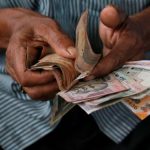On Tuesday, June 18, the Australian Dollar (AUD) remained strong against its major rivals as market participants analyzed the Reserve Bank of Australia (RBA) policy announcements and Governor Michele Bullock’s comments. The focus was on the ZEW Survey for Germany and the Eurozone in the European economic docket, along with Retail Sales and Industrial Production data from the US later in the day. Following the RBA’s June policy meeting, the board members voted to keep the Official Cash Rate (OCR) unchanged at 4.35%, citing easing inflation that remains high and is slower than previously expected. Governor Bullock mentioned that policymakers discussed the possibility of rate hikes at the meeting and highlighted their alertness to upside risks to inflation. This led to an increase in AUD/USD by 0.3% to 0.6630.
BoJ Governor Kazuo Ueda stated that there is a chance of a potential interest rate hike at the July meeting, depending on economic, price, and financial data available at the time. While these comments did not boost the Japanese Yen significantly, USD/JPY was trading in positive territory around 158.00. Euro/USD saw modest gains on Monday and remained in consolidation below 1.0750 on Tuesday, while GBP/USD edged higher after a slight decline on Friday and moved around 1.2700. Gold prices faced pressure from rising US Treasury bond yields and closed in the red on Monday, with XAU/USD holding near $2,320 in the European morning.
Central banks play a crucial role in maintaining price stability in economies by managing inflation through policy rate adjustments. Key central banks such as the US Federal Reserve (Fed), European Central Bank (ECB), and Bank of England (BoE) aim to keep inflation close to 2%. Central banks use their benchmark policy rate as a tool to control inflation by either tightening monetary policy through rate hikes or easing it with rate cuts. Policy board members of central banks, known as doves or hawks, have differing views on monetary policy, with doves favoring loose policies to boost the economy and hawks advocating for higher rates to control inflation.
Central banks are typically politically independent, with a chairman or president leading policy meetings and making final decisions to achieve consensus between dovish and hawkish members. The chairman delivers speeches to communicate the current monetary stance and outlook, aiming to avoid market volatility. Central banks have blackout periods before policy meetings where members are restricted from making public statements. This ensures that market expectations are managed effectively leading up to policy announcements.
In summary, the Australian Dollar remained resilient following the RBA policy meeting, while the US Dollar struggled to find demand amid positive sentiment on Wall Street. BoJ Governor Ueda’s comments on a potential rate hike did not impact the Japanese Yen significantly, and major currency pairs like Euro/USD and GBP/USD saw modest gains or consolidation. Gold prices were pressured by rising US Treasury bond yields, and central banks play a crucial role in managing inflation and maintaining price stability through policy rate adjustments. It is important for market participants to closely monitor central bank announcements and economic data releases for insights into currency movements and market trends.
















